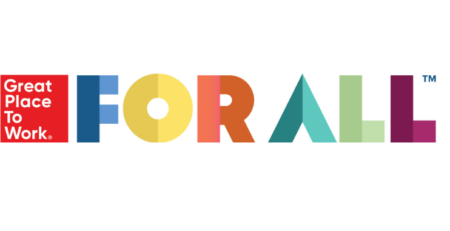5 Traits of a Mindful-Agile Mindset
The cheetah is the fastest animal on earth and a great illustration of a favorite mantra:
“Speed Up By Slowing Down.”
If you are wondering what does the cheetah have to do with a Mindful-Agile Mindset. The answer is EVERYTHING. But let me get back to that later…
Earlier this year I co-facilitated a workshop at 1st Conference, a non-orthodox conference dedicated to the Australian Agile Community organised by TABAR. Our session was nearly sold out and we explored the similarities between an Agile Culture and a Mindful Culture. Not surprisingly we identified many common aspects between the two.
Honestly, the fact that there is a significant intersection between the Agile Mindset and a Mindful way of working is already well known. A number of articles have been published by thought leaders like Michelle Trudgian (Deloitte) and Kathy Berkidge (Mind at Work). Additionally, formal research on Mindfulness and Agile Software Development have been conducted by Sabine Matook (University of Queensland) and Professor Karlheinz Kautz (RMIT). Still, after attending a few meet-ups organised by The Heart of Agile Melbourne Team recently, I felt drawn to share my 2 cents on the topic here on LI, hence this article…
Below are some traits cultivated through a regular Mindfulness practice which I believe can be highly beneficial for Agile Teams irrespective of their industry, geography or size.
1. BEGINNER’S MIND
Beginner’s Mind is one of the many qualities developed by those who practice mindfulness on a regular basis. It can be defined as the ability to see things, people and events with fresh eyes. Letting go of previous experiences and judgement. It takes a lot of practice to cultivate such skill. Beginner’s mind is critical for problem solving and essential for a creative-innovative mindset. A lovely quote on this virtue, from Zen Master Shunryu Suzuki:
“In the beginner’s mind there are many possibilities, in the expert’s mind there are a few.”
2. PRESENCE
When you have only 15 min for your daily stand up meeting you must be present and focused to actively listen and communicate clearly. The high quality of attention developed through a regular mindfulness practice is very welcome here. Missing out on a team member update or the product owner input can cost hours (if not days) of unnecessary re-work.
According to research by investing just 10 min a day for 4 weeks, one can experience a significant improvement on their quality of attention. Now, if you feel you can’t afford 10 min a day, here is another sweet Zen saying for you:
“You should sit in meditation for 20min a day, unless you are too busy then you should sit for an hour.”
3. PATIENCE & ACCEPTANCE
In this Agile World, change is the only constant.
- Product directions may shift as a result of Review Meetings…
- Familiar ways of working will evolve after a Reflection Session…
- New untested ways of working may get adopted…
- Teams get assembled and dissolved…
Agile mirrors and embraces life’s twists and turns. When change inevitably comes, do we have the patience to bear with changes that frustrate us or brings fear of the unknown? Will we be able to accept the Product Owner’s decisions that we disagree with, but still put our best effort into what is within our control?
The ability to accept the things that we don’t have authority-ability to change or influence is essential. So our energy and focus can be redirected to the things we can impact. Patience and acceptance (not apathy) are virtues developed naturally as a result of a regular mindfulness practice. The popular serenity prayer beautifully encapsulate the idea:
“May I have the serenity to accept things I cannot change. Courage to change the things I can. And wisdom to know the difference.”
4. MINDFUL GOALS, PLANNING & PRIORITIES
A key value and quality of Agile is that it makes the product development process highly responsive to change. For this to work, mindful planning and prioritization are needed during the Release Planning Meeting. A few considerations for reflection are:
- Are we prioritizing the right/most valuable features or use-case Stories to go into this next Release?
- Are we holding the plan lightly enough to let go of it and change it when the business environment and customer needs change (sometimes overnight and with little warning)?
- Which features or use-case Stories in the Backlog do we have a personal preference or affinity for?
- Do we have the Balance and Equanimity to accept what the Product Owner is telling us to include in or drop from the Sprint?
Again the virtues developed by a regular mindfulness practice, such as equanimity, balance and ability to let go are essential in such scenarios. Those qualities can help Agile Teams to mindfully and effectively set goals, plan and prioritise in the face of ongoing changes.
5. FOCUS COMBINED WITH OPEN AWARENESS
The Agile way of working (and thinking) requires the ability to focus on current sprint deliverables while maintaining open awareness of what is happening in the business-client’s world. This is brilliant because allows Agile Teams to tune into clients-users reality and deliver relevant-current solutions. However there is a pitfall, as many of us tend to have 2 basic operation modes:
a. Single focus – usually combined with tension
b. Completely relaxed – often easily prone to distraction
Unfortunately those 2 states are not helpful. The first one tend to keep us in a bubble alienated from our surroundings. The second is conducive for side tracking. Good news are that a regular mindfulness practice enables us to cultivate a relaxed yet alert state. A state where one can be focused and not mindlessly carried away by unimportant distractions. In the same time, a state where one is openly aware of their surroundings and can detect important distractions that deserves attention and action.
So these are my 2 cents on WHY I believe a regular mindfulness practice can be highly valuable for Agile Teams. Having said that and I am obviously biased.
Circling back to the cheetah…
Nature is always teaching us, if only we pay attention. Paraphrasing Rasmus Hougaard on his first wonderful book “One Second Ahead”:
“The cheetah has been recorded running at speeds of 120km per hour. Yet if the cheetah was to run at that pace for a full day, it would be dead from exhaustion in just hours. For the cheetah to use its full speed while hunting most effectively, it starts very slowly. At first, it slowly stalks its prey, blood engorging its muscles and its brain maintaining a singular focus. This brief phase of calm actually enables the cheetah to explode into action when its prey is within range.”
In summary, cultivating a mindfulness practice can help ALL of us (not just Agile Teams) to speed up by slowing down. If you need help to get started do not hesitate to reach out!
Reference:
- One Second Ahead – Rasmus Hougaard (Potential Project)
- The Mindful Agile Enthusiast – Michelle Trudigan (Deloitte)
- Mindful Agile – Kathy Berkidge (Mind at Work)
- Research paper on Mindfulness & Agile Software Development – Matook & Kautz (RMIT and University of Queensland)
*** Special thanks to my Potential Project colleagues, David Chung, Sarah Robertson, Murray Paterson, Martin Strom and Reza Daryaei, for discussing and exploring the synergies between Agile and Mindfulness.
#MINDFULNESS #AGILE #TABAR #1STCONF #HEARTOFAGILE #CULTURE #ZENHIGHACHIEVER












Leave a Reply